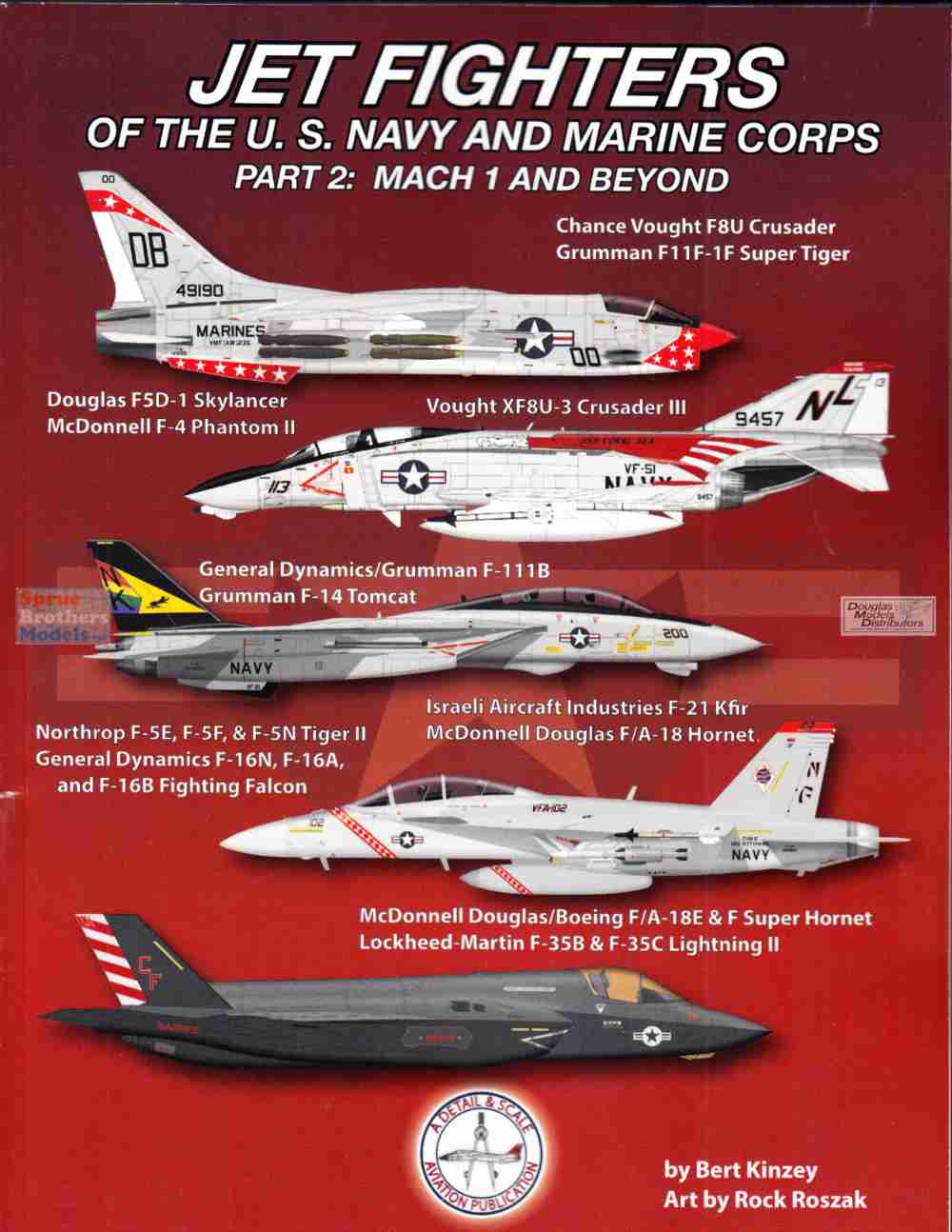Jet Fighters of the U.S. Navy and Marine Corps Part 2: Mach 1 and Beyond
Released in time to be added to Christmas wish lists, this latest offering from Detail and Scale covers every jet fighter aircraft used by the U.S. Navy and Marine Corps from the F-8 Crusader to the new F-35 Lightning II. This book contains 208 photographs (188 in color) and 10 full color aircraft profiles, and picks up where Part 1 left off. I would highly recommend this book to all fans of modern Naval/Marine Aviation, whether a modeler or not.
IPMS members are likely familiar with Bert Kinzey, and have probably seen him in person when attending the Nationals, or some regional events. In his latest book, he covers what most would consider modern aircraft, starting with Vietnam-era planes and including everything up to the newest planes being flown today. Thirteen different airframes are discussed including the F-8; F-11F-1F; F5D; F-4; XF8U-3; F-111B; F-14; F-5E, F-5F, and F-5N; F-21A; F-16N, F-16A, and F-16B; F/A-18A, F/A-18B, F/A-18C, and F/A-18D; F/A-18E and F/A-18F; and F-35B and F-35C.
Following a Forward and an Introduction, the book goes into the details of Aircraft Carrier Development starting with the modification of Essex-class carriers to add improved catapults as well as an angled deck (along with other upgrades). The Midway-class ships were also upgraded for the aircraft that were beginning to enter service. It was in 1951 that the Navy ordered the first “supercarrier”, the USS Forrestal (CV-59), which was a giant leap forward in carrier design. The Kitty Hawk-class ships would follow along with the single Enterprise-class ship and then an additional two Kitty Hawk-class ships before the Nimitz-class was introduced. In 2017, the USS Gerald R. Ford (CVN-78) was commissioned, and ushers in a new class of nuclear-powered aircraft carriers that will replace the Nimitz-class ships.
In the chapters covering the aforementioned thirteen aircraft, the lengths vary from two pages for the F-21A Kfir, which was leased by the Navy and Marines for four years beginning in 1985, to thirteen pages for the F-14 Tomcat. Each chapter provides a great amount of detail from the initial design, modifications, squadron information, and eventual retirement for most of planes covered. My hits include the high quality photographs and art work one would expect from Detail and Scale as well as the great information contained in this book. I have no misses to mention.
Being a former carrier sailor and modeler, I would highly recommend this book to any modeler looking for an up to date book on the modern fighter aircraft of the U.S. Navy and Marine Corps. As I mentioned previously, the historical information provided on aircraft carrier evolution and aircraft development will also make this book enjoyable for historians. I would like to thank the folks at Detail and Scale Aviation Publications for providing this book to the IPMS/USA for review, and I appreciate having been afforded the opportunity to write this appraisal. As always, thanks to you the reader for taking the time to read my comments.

Reviewer Bio
Scott Hollingshead
Scott retired from the commercial nuclear industry with over thirty years of experience in Maintenance, Engineering, and Training. Prior to that he served on two aircraft carriers during his time in the U.S. Navy. He has been building models for over 50 years with his first kit being purchased with money from his grandparents for his sixth birthday. With a stash that consists of more aircraft than anything else, Scott still enjoys building a little bit of everything (including but not limited to tanks, cars, show cars, military vehicles (aside from tanks), ships, figures, real space, and some science fiction), which keeps his stash growing. Scott and his wife Fern reside in southwest lower Michigan, not far from South Bend, Indiana, and have three adult children and currently three grandchildren as well as a small dog and a large cat.







Comments
Add new comment
This site is protected by reCAPTCHA and the Google Privacy Policy and Terms of Service apply.
Similar Reviews